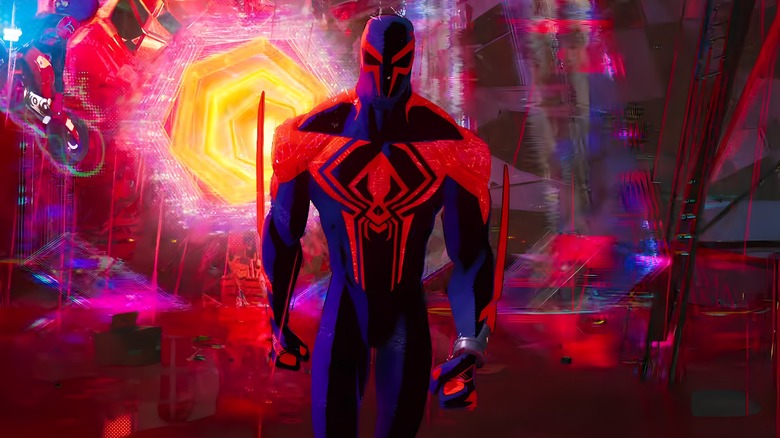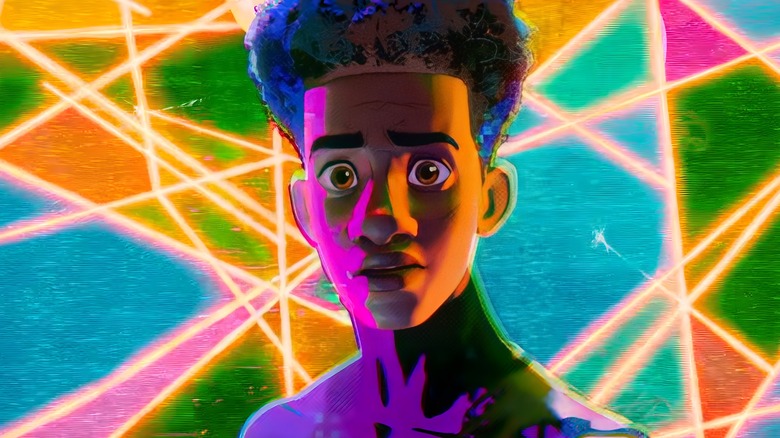Across The Spider-Verse Editor Confirms There Are Multiple Versions In Theaters
"Spider-Man: Across the Spider-Verse" continues to be full of surprises. The critically acclaimed sequel blew audiences away when it was released at the beginning of June, delivering some of the most stunning and visually diverse animation ever seen in a feature film. And now, a few keen-eyed viewers are noticing that there's more than one version of the movie playing in theaters.
Having multiple theatrical versions of the same film isn't exactly a new idea. In fact, there have been several prominent instances over the decades. For instance, the 1985 "Clue" movie famously had multiple endings, each one revealing a different character as the murderer. Different theaters received different cuts of the film, with all being included in later at-home releases.
In the case of "Across the Spider-Verse," it seems that different theatrical versions have slightly disparate animations — or at least one. The changes aren't big enough to affect the story in any meaningful way, but they have now been confirmed by film editor Andy Leviton on Twitter, who worked on the film and its predecessor, "Spider-Man: Into the Spider-Verse."
What changes in the different Across the Spider-Verse cuts?
What's different between the alternate versions of "Spider-Man: Across the Spider-Verse?" From what's been discovered so far, not much. The fan tweet that Andy Leviton responded to compared two versions of the same scene — an early exchange between Miguel (Oscar Isaac) and his AI assistant Lyla (Greta Lee) during the battle against the Vulture (Jorma Taccone). Realizing that he's a little overmatched, Miguel asks Lyla to call in some backup, and she gives him a hard time about it.
In both cuts of the scene, the dialogue is the same, but Lyla's digitized animation is just slightly altered. In one, she takes a selfie with Miguel after forcing him to admit he needs help. In the other one, she pops a quick squat and points at him accusingly.
It's such a small detail that most viewers would never know the difference, and it begs the question: What else could be different between these two versions? "Across the Spider-Verse" is so rich with visual detail and animated diversity that you could hide a bunch of these little differences in plain sight. In his own Tweet, Leviton wrote, "I was wondering when people might start noticing," implying that this scene could be just the tip of the iceberg.
The inclusion of these slightly different cuts could be meant as a fun Easter egg, or it might be a way to include multiple options that were animated for the final film. Either way, they'll surely give repeat viewers lots to watch out for, and it should be interesting to see how home releases deal with the multiple versions.

